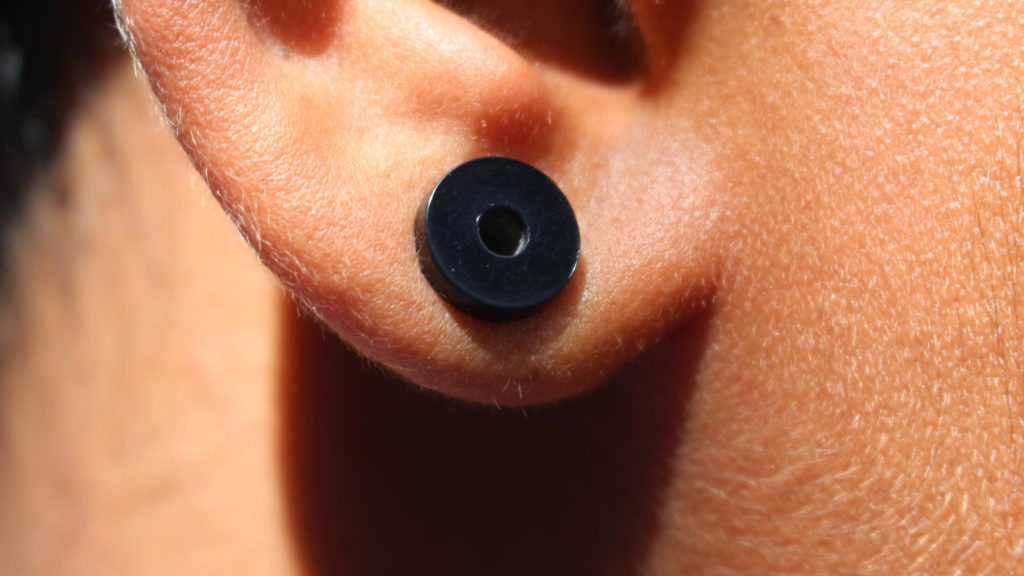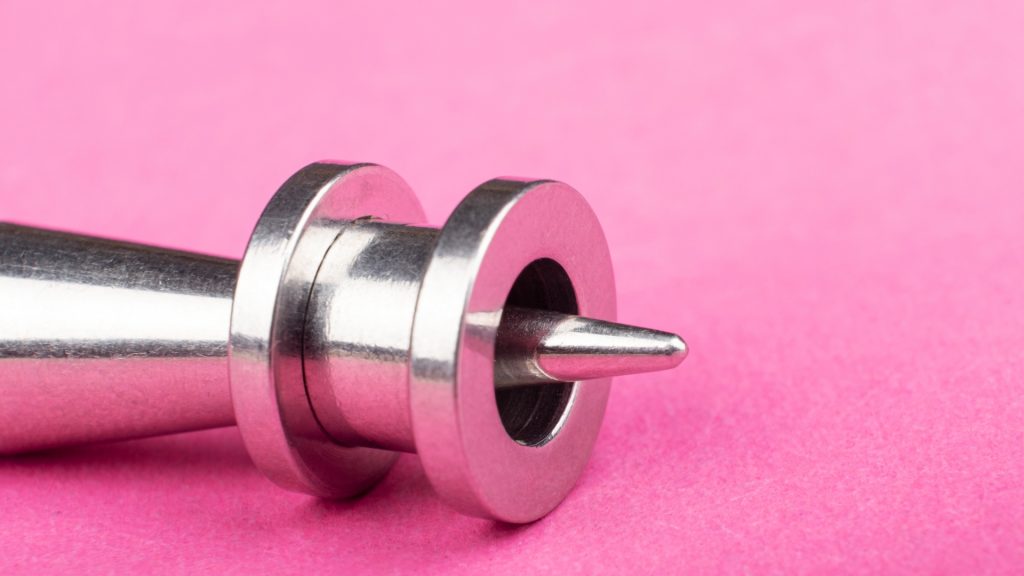When you start stretching your ears, you’re probably wondering where to begin. First off, make sure your ears are completely healed from getting pierced. Then, you can start stretching from a 16 gauge, which is slightly thicker than the usual 18 gauge piercing. Take it easy and only go up one size at a time.

Remember, your ears are new to stretching, so take good care of them. Start by stretching slowly and at the right size. This will help you stretch even more in the future without any issues.
What’s the Tiniest Ear Stretching Size?
Regular ear piercings for stretching are typically done with earrings that are about 1mm thick, usually at 20g or 18g. That’s where most begin stretching. From there, you can move up to the next size, which is usually either 14g (1.5mm) or 16g (1.2mm).
If you’re ever unsure, take a look at the conversion table below:
| Millimeter | Gauge / Inch |
| 0.6mm | 22g |
| 0.8mm | 20g |
| 1mm | 18g |
| 1.2mm | 16g |
| 1.6mm | 14g |
| 2mm | 12g |
| 2.4mm | 10g |
| 3mm | 8g |
| 4mm | 6g |
| 5mm | 4g |
| 6mm | 2g |
| 8mm | 0g |
Choosing Jewellery for Ear Stretching

For ear stretching, it’s best to use jewellery specifically designed for stretching, like tapers and plugs for ear piercing. These are made from materials like surgical steel, titanium, or glass, which are safe for your skin and won’t cause irritation. Avoid using regular earrings or low-quality materials, as they may not be suitable for stretching and can cause problems like infections or blowouts.
How Much Can You Stretch Without Permanent Holes?

When it comes to stretching your ears, everyone’s got a different story. Our earlobes are unique, so there’s no set limit before they can’t bounce back.
Most pros advise stopping at a 0 gauge, or even better, a 2 gauge if you want your ears to shrink back to normal size. But remember, everyone’s different; some find their ears don’t shrink at all.
Taking it Slow is Key

Stretch gradually and carefully without skipping sizes. Rushing it can damage your lobes and make them less likely to shrink back.
If you’ve stretched too far and worry your ears won’t go back, surgery might be the only option. So, think twice before stretching big; it could mean surgery down the road. Take care of those lobes.
It’s important to note that stretching your ears is a permanent change. Once you stretch beyond a certain point, there’s no turning back without medical intervention. So, if you’re unsure about stretching, it’s best to stick to smaller sizes to avoid potential regrets later on.

- Increasing your gauge size should happen gradually, one step at a time. Rushing can cause damage to your ears and hinder further stretching.
- Make sure your ears are fully healed before moving on to the next stretch. This ensures they’re strong enough to handle the next size.
- Avoid using materials that can harbour bacteria or cause irritation. This includes low-quality metals or plastics that can lead to infections and slow down the healing process.

By following these guidelines, you can prevent lasting damage, avoid scar tissue formation (which can limit future stretching, especially at larger sizes), and reduce the risk of complications or infections.
Blowouts? Here’s How to Fix Easy
Blowouts are a common issue when stretching your ears too quickly or skipping sizes. They happen when the skin tunnel around your piercing is pushed out, leaving extra skin around your ears.
If you keep stretching with a blowout, it can get worse and even become permanent, making it harder to stretch further.

To fix it, take out your plugs and let your ears heal. You can either leave them without any jewellery or try smaller plugs to keep your ears stretched while healing. Massaging your ears with vitamin E oil can also help speed up the healing process and keep your earlobe healthy.
